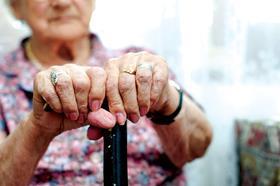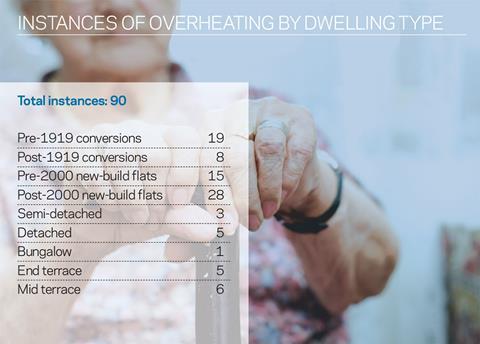Ecobuild latest: Report by Good Homes Alliance shows danger to vulnerable residents in accommodation built after 2000

New-build flats and care homes are at high risk of overheating and causing serious health problems and even death to elderly and vulnerable residents, one of the first studies to look at the problem in detail has found.
The Good Homes Alliance (GHA) report, due to be launched at Ecobuild next week and shared exclusively with Building, found that 30% of instances of overheating recorded in the study occurred in flats and elderly care homes built after 2000.
The study comes amid the wider debate about sustainability and climate change, and as the industry gears up to build highly energy efficient zero-carbon homes by 2016.
The survey of over 100 housing providers, environmental health officers, local authorities and GHA members provided details on 90 instances of overheating, with 48% of those occurring in purpose built flats, including care homes, and 30% in properties built after 2000 (see table below).
It said care homes and student accommodation were at “particular risk” because the units were often small. It also found that properties in urban areas were more likely to overheat.
It said the causes of overheating included inadequate ventilation; single aspect flat design; large areas of full-height glazing; and fixed windows.
Overheating in homes has long been linked with health issues. The Health Protection Agency has linked excessive heat to mental health complications, stroke, and heart attacks, while in 2003 there were 700 deaths as a result of heat waves.
“Many of these were elderly people who suffered thrombotic stroke and heart failure,” the GHA study said.
Pete Halsall, chair of the Good Homes Alliance, said he was “surprised” by the number of properties that were subject to overheating.
He said the GHA’s research was the “tip of the iceberg”, with much wider overheating issues yet to be uncovered.
“I would be extremely worried now about any urban apartment development and its potential for overheating,” he said.
He said housebuilders had “a duty to get it right” and the industry needed to “show leadership” on tackling the issue.
“We need to look at [flats] with the level of design sophistication that we would do for commercial buildings,” he said.
James Hulme, strategic policy advisor at the House Builders Association, said Part L of the Building Regulations was to blame for specifying levels of airtightness that were too high, causing them to overheat.
He said: “The regulations need to change and buildings need to be able to breathe.
“Builders have been required to conform to these ever exacting standards of Part L.”

Heating risks
The report found one occupant of a new-build flat had “taken to keeping a very close eye on the weather forecast and if it was forecast to be a sunny weekend, would make arrangements to stay away for the weekend”.
The study recorded temperatures of 36°C in the flat. A care home, built after 2000, was found to have temperatures of over 30°C in its corridors. The corridors had only one window that opened just 100mm. A resident of another block of new-build flats was found to have clinical signs of dehydration.
The study found that the average indoor temperature of all the rooms was over 25°C, which it said was “the trigger point identified in the guidance ‘where mortality increases and there is an increase in strokes’”.
Mind the Gap
A new project aiming to drive up housing standards by empowering consumer choice will be launched at an event in Brighton next week.
The Mind the Gap project from the Housing Forum explores the opportunities of “readily comprehensible information that would enable customers to make comparisons between the different choices available in a comparable and meaningful way, based on performance.” The launch event will be held on Wednesday March 5 from 12-2.30pm at the Albert Room in the Grand Hotel.
Speakers including Housing Forum chairman and Building.co.uk blogger Ben Derbyshire and the director of housing and land at the GLA, David Lunts.
RSVP to rachel.hardman@hta.co.ukto book your free place.
Building is Mind the Gap’s official media partner.



























8 Readers' comments